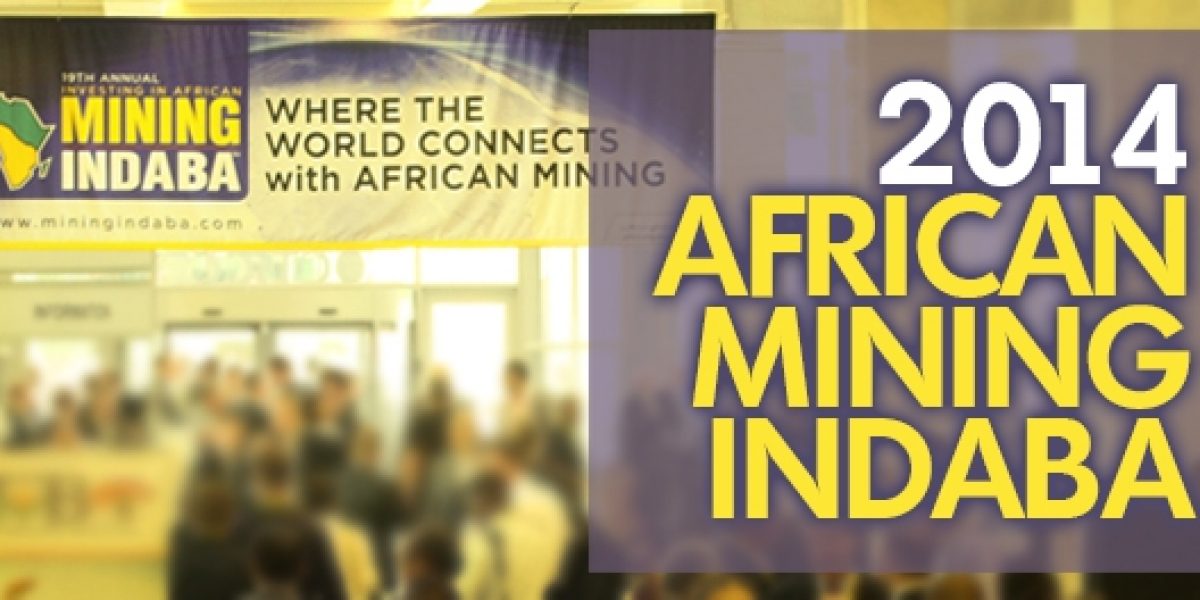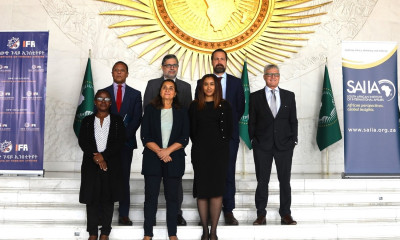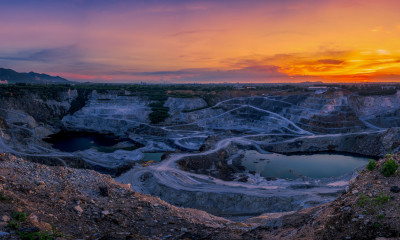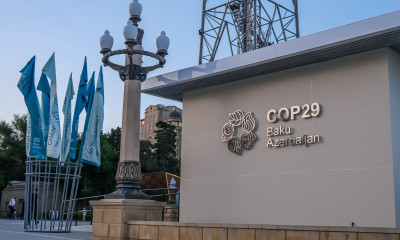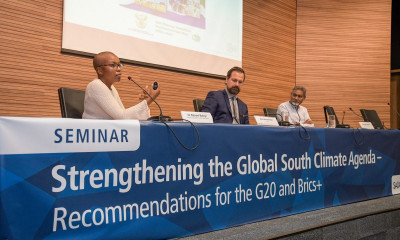Now in its 20th year, the event is expected to draw almost 8,000 participants, including representatives of more than 1,500 companies and 45 African and non-African government delegations. During the same period civil society organisations will convene the Alternative Mining Indaba, with a particular focus on community concerns, environmental degradation, taxation, human rights and sustainability as it relates to the African minerals sector.
This year’s Indaba will take place against the backdrop of rising difficulties for the mining sector, in Africa and globally. Internationally, commodity price volatility amidst an uneven economic recovery, resurgent resource nationalism, growing demands from mining communities as well as skills shortages stand out among the key challenges facing the industry. In the South African context, labour tensions and relentless strike action have exacerbated a difficult operating environment characterised by minerals policy uncertainty.
Traditional mining majors are struggling to maintain productivity and profit margins in the wake of these difficulties. Juniors too are struggling to make headway. A recent report by Deloitte notes that, as of September 2013, ‘industry impairment charges topped an astonishing $75bn in just two years.’ However, China and other BRICS nations are also changing the investment landscape, with Chinese investment rising even as traditional players struggle to adapt in a changing environment.
The shift to a more complex investment climate has also coincided with a sharpening focus on improved resource governance and linkages between mineral exploitation and socio-economic development. Demands for a better deal from local communities affected by mining activities are on the rise, as are calls for greater transparency and environmental responsibility.
The 2014 African Mining Indaba offers an opportunity to reflect on the implications of changes in the operating environment and the governance frameworks that shape mineral investment in Africa. During the Indaba week, SAIIA will be hosting a Roundtable on Resolving Labour Tensions in African Mining on 3 February 2014. On 7 February 2014, the institute will also hold its annual Change-Makers Forum which is a high-level multi-stakeholder dialogue aimed at providing a platform for meaningful stakeholder engagement around the sustainable development potential of the African extractive sector.
In the course of 2013 SAIIA’s Governance of Africa’s Resources Programme has undertaken research on a range of issues related to the extractive industry governance. Please refer to the publications and opinion pieces below for further details.
Key Resources:
Videos
SAIIA Podcast 23: Governing Extractive Industries in Africa with Oladiran Bello (January 2014)
The extraction of natural resources in Africa, such as oil, gas, diamonds and gold, is a critically important issue for the development and self-reliance of the continent. We spoke to SAIIA’s Oladiran Bello about measures to ensure that revenues from this booming industry can be transparently and effectively managed.
SAIIA Podcast 22: Mining a Year After Marikana with Ross Harvey (December 2013)
The Marikana massacre in August 2012 forever altered the South African mining industry, particularly in the way labour unions and mining companies relate to each other. We spoke to SAIIA Research Fellow, Ross Harvey, about the state of the industry today.
Publications
Releasing the Prisoners from their Dilemma: How to Resolve Labour Tensions in South Africa’s Mining Sector, by Ross Harvey, SAIIA Policy Briefing 81 (December 2013)
Assessing Competitive Resource Tenders as an Option for Mining Rights Allocation in South Africa, by Oladiran Bello, Alex Benkenstein and Ross Harvey, SAIIA Occasional Paper No 159 (November 2013)
Marikana as a Tipping Point? The Political Economy of Labour Tensions in South Africa’s Mining Industry and How Best to Resolve Them, by Ross Harvey, SAIIA Occasional Paper No 164 (November 2013)
Towards Understanding South Africa’s Differing Attitudes to the Extractive Industries Transparency Initiative and the Open Governance Partnership, by WR Nadège Compaoré, SAIIA Occasional Paper No 146 (May 2013)
Is the Extractive Industries Transparency Initiative Relevant for Reducing Diversions of Public Revenue? The Mozambican Experience, by Rogério Ossemane, SAIIA Policy Briefing No 61 (January 2013)
Uranium Mining in Africa: A Continent at the Centre of a Global Nuclear Renaissance, by Nicolas Dasnois, SAIIA Occasional Paper No 122 (September 2012)
A 21st Century Scramble: South Africa, China and the Rare Earth Metals Industry, by Nicholas Jepson, SAIIA Occasional Paper No 113 (March 2012)
Raising Mozambique: Development Through Coal, by Neissan Besharati, SAIIA Policy Briefing No 56 (September 2012)
Opinion and Analysis
The Kimberley Process after South Africa: into uncharted territory, by Oladiran Bello (25 November 2013)
Contrary to the urgent calls for the reform of the Kimberley Process (KP), its year-end plenary took place in Johannesburg from 19 to 22 November 2013 without a breakthrough on the pressing reform questions. The outgoing chair, South Africa, will now handover to China in early 2014, with Angola in line to take the helm in 2015. Neither successor is likely to push hard on the reform front, underlying the extent to which South Africa’s own tenure had been a missed opportunity.
The Kimberley Process risks becoming irrelevant to cogent concerns, by Oladiran Bello (28 October 2013)
By prioritising consensus among its state parties and industry stakeholders in defiance of calls by civil society organisations (CSOs) for governance-enhancing reform, the Kimberley Process Diamond Certification Scheme (KPCS or KP) risks sleep-walking into irrelevance.
SA Parliament hears from SAIIA on Mining Bill (18 September 2013)
On 13 September 2013, SAIIA’s Governance of Africa’s Resources Programme (GARP) honoured an invitation by the South African Parliamentary Portfolio Committee on Mineral Resources to address its public hearings on the Mineral and Petroleum Resources Development Act (MPRDA).An amendment of the MPRDA of 2002 (enacted in 2004) has been on the public policy agenda since at least 2008. In 2010, the Minister of Mineral Resources, Ms Susan Shabangu, recognised that the Act contained some ambiguity and allowed excessive ministerial discretion. The debates around the nationalisation of mines also reached a crescendo in the lead up to the June 2012 policy.
Mining Sector Violence Reflects a Deeper Social Malaise, by Ross Harvey (15 August 2013)
Marikana has elicited a voluminous spectrum of analyses. The most insightful have pointed to the need for deep structural reforms, including innovative means of addressing the persistent challenges of migrant labour. Few, however, have drawn parallels between Marikana and the central problem of violence in South African society more broadly.
Real decentralised bargaining needed in the platinum sector, by Ross Harvey (09 July 2013)
The National Union of Mineworkers (NUM) has submitted an application to the Labour Court to prevent its loss of official recognition at the Lonmin platinum mines. They dispute the Association of Mineworkers and Construction Union (AMCU)’s claim to representing 70% of low-skilled workers now. That NUM is desperately contesting Lonmin’s plans to recognise AMCU is a destructive function of the institution of centralised bargaining.
South Africa should leverage the Extractive Industry Transparency Initiative (EITI), by Oladiran Bello (21 May 2013)
Increasingly assertive in continental politics and highly visible in a number of key global regulatory frameworks for the extractive sector, observers continue to wonder why South Africa (SA) remains conspicuously absent from the Extractive Industries Transparency Initiative (EITI). This year marks the tenth anniversary of the framework as it does the Kimberley Process, another high-profile international regulatory scheme in which South Africa plays an instrumental role in preventing conflict minerals from entering the international diamonds supply chains through certification.
The New EITI Standard and the role of civil society, by Mari-Lise du Preez and Alex Benkenstein (04 June 2013)
The recent global conference of the Extractive Industries Transparency Initiative (EITI), convened in Sydney from 23-24 May 2013, provided an opportunity for the EITI board to adopt and launch the EITI Standard, a new set of membership criteria and reporting standards aimed at strengthening the contribution of the EITI to improved governance of extractive industries.
Resource nationalism threatens Africa’s mining boom, by Oladiran Bello (03 February 2013)
On the eve of the 2013 Mining Indaba, resource nationalism remains a serious investment risk which threatens both foreign investors and resource-producing states alike. With growing attention devoted to the subject, it appears that assertive resource-exporting countries in Africa risk alienating international capital. In newly resource-rich states and older producers alike, some proposals ostensibly aimed at maximising society’s benefits from resource extraction have spooked investors. Much discussion at the Indaba this week will touch on the disparate experiences often termed resource nationalism, but it is worth reflecting on what the term really means.
Resource geopolitics fuelling external rivalry in the CAR, by Oladiran Bello (17 April 2013)
The South African deployment in the Central African Republic (CAR) which created a political firestorm at home, came to a precipitous end when President Zuma announced the forces’ withdrawal on 3 April. Beyond the official explanation which centred on a bilateral military cooperation agreement, unpacking the real rationale behind South Africa’s involvement requires a closer reading of a new African geopolitical script of which Pretoria is very much a part. Such a reading must consider the economic (largely resource) interests that forced the long unstable central African country back into the global media spotlight this past month.


